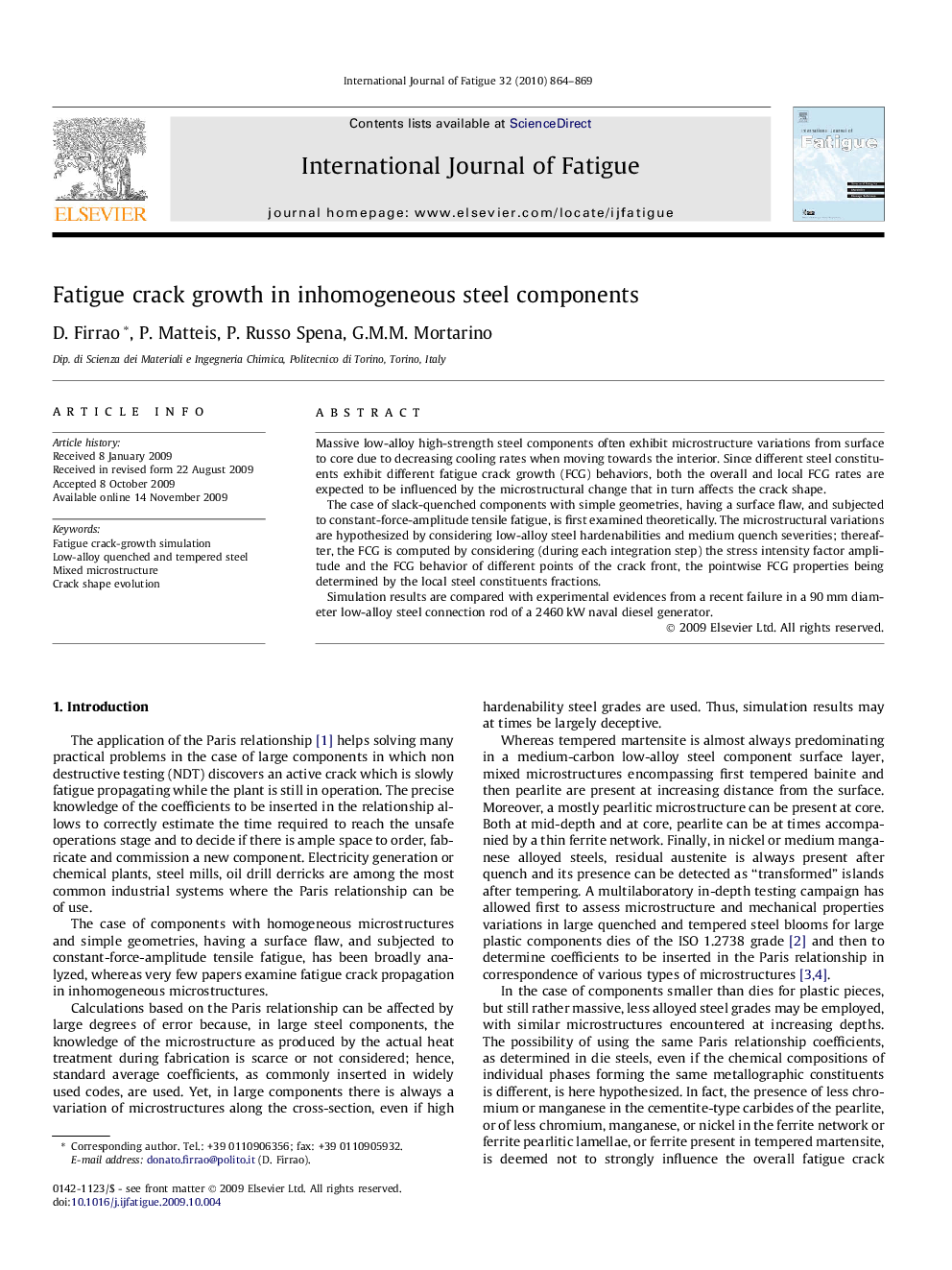| Article ID | Journal | Published Year | Pages | File Type |
|---|---|---|---|---|
| 775568 | International Journal of Fatigue | 2010 | 6 Pages |
Massive low-alloy high-strength steel components often exhibit microstructure variations from surface to core due to decreasing cooling rates when moving towards the interior. Since different steel constituents exhibit different fatigue crack growth (FCG) behaviors, both the overall and local FCG rates are expected to be influenced by the microstructural change that in turn affects the crack shape.The case of slack-quenched components with simple geometries, having a surface flaw, and subjected to constant-force-amplitude tensile fatigue, is first examined theoretically. The microstructural variations are hypothesized by considering low-alloy steel hardenabilities and medium quench severities; thereafter, the FCG is computed by considering (during each integration step) the stress intensity factor amplitude and the FCG behavior of different points of the crack front, the pointwise FCG properties being determined by the local steel constituents fractions.Simulation results are compared with experimental evidences from a recent failure in a 90 mm diameter low-alloy steel connection rod of a 2460 kW naval diesel generator.
